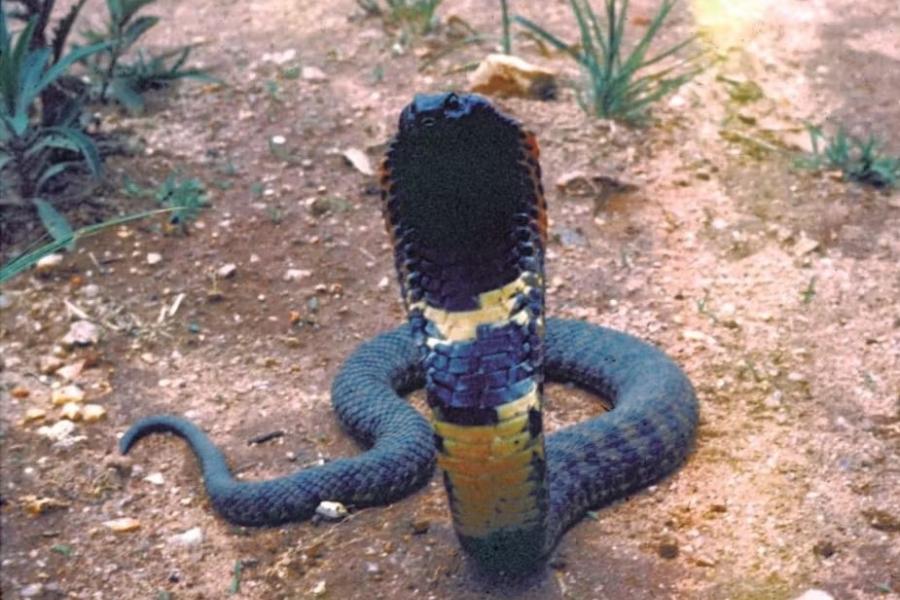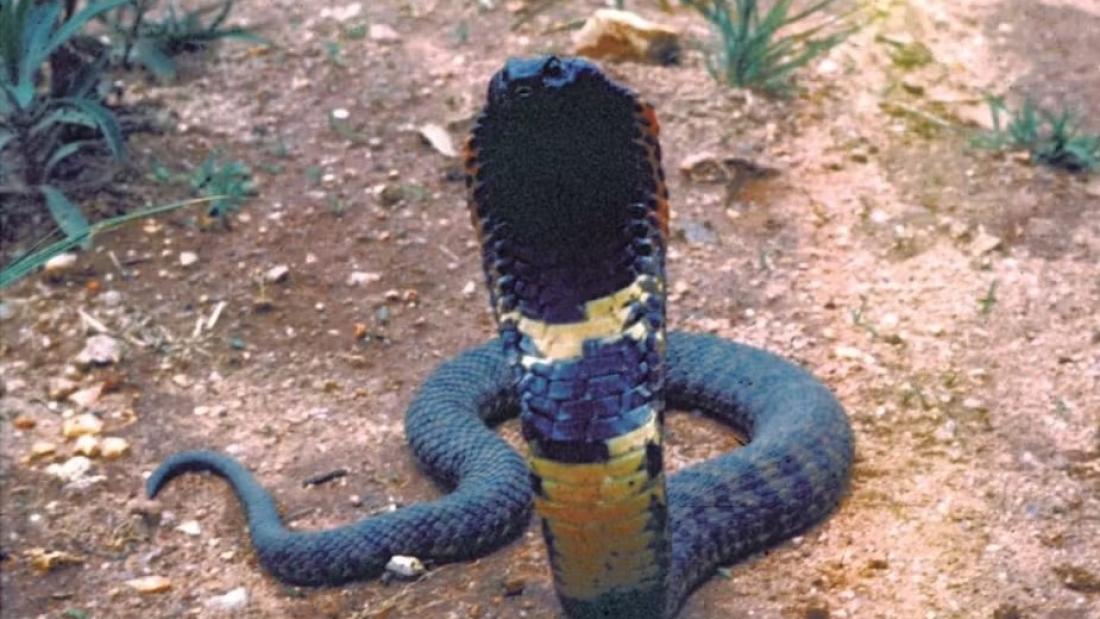Around the world, natural history museums hold a treasure trove of knowledge about Earth’s animals. But much of the precious information is sealed off to genetic scientists because formalin, the chemical often used to preserve specimens, damages DNA and makes sequences hard to recover.
However, recent advances in DNA extraction techniques mean that biologists can study the genetic code of old museum specimens, which include extremely rare or even recently extinct species. We harnessed this new technology to study a snake from the Eastern Highlands of Zimbabwe that was run over in 1982, and discovered it was a new species. Our research was recently published in PLOS One.
The Eastern Highlands of Zimbabwe, a mountain chain on the border with Mozambique, create a haven of cool and wet habitats surrounded by savannas and dry forest. They are home to many species that are found nowhere else.
Here, a mysterious population of snakes first drew the attention of scientists around 1920. An unusual snake displaying a cobra-like defensive hooding posture was spotted in the grounds of Cecil Rhodes’ (prime minister of the Cape Colony in the late 19th century) Inyanga Estate in Nyanga.
This snake had unusual markings with red skin between its scales, creating the effect of black dots on a red background when its hood is extended. None of the other cobras found in the area match this description.
More snakes like this were reported in the 1950s, but no specimens were collected.


A rare find
The mystery surrounding these sightings piqued the interest of the late Donald G. Broadley, now considered to be the most eminent herpetologist (reptile and amphibian expert) of southern Africa. In 1961, Broadley was given some severed snake heads and identified the mystery snake as a rinkhals (Hemachatus haemachatus), a species otherwise only found in South Africa, Eswatini (formerly known as Swaziland) and Lesotho.
The Deadly Dozen - Rinkhals (Hemachatus haemachatus)
A handful of specimens were observed and measured in later years, but the landscape has been drastically altered by forestry. The rinkhals from Zimbabwe has not been seen in the wild since 1988 and is feared to be extinct.
This population lives 700km away from other, more southerly populations, which made us suspect it may be a separate species. But the genetic material contained within the specimen from Zimbabwe was degraded, meaning we couldn’t do the DNA studies needed to confirm whether it is a different species from other rinkhals.
New technology
However, the latest DNA extraction and sequencing methods have been developed over the last ten years to help biologists study the remains of ancient animals. We used the new techniques to examine the Zimbabwe rinkhals specimen. Our study showed they represent a long-isolated population, highly distinct from the southern rinkhals populations.
Based on their genetic divergence from the other rinkhals, we estimate that the snakes in Zimbabwe diverged from their southern relatives 7-14 million years ago. Counting a snake’s scales can help identify what species it is. Subtle differences in scale counts, revealed by our analysis of other specimens, provided enough evidence to classify the Zimbabwe rinkhals as a new species, Hemachatus nyangensis, the Nyanga rinkhals.
The scientific name nyangensis means “from Nyanga” in Latin.
Hemachatus nyangensis has fangs modified to spit venom, although the behaviour was not reported from the few recorded interactions with humans. The closely related true cobras (genus Naja), some of which are known to spit venom, do so with the same specialised fangs that allow venom to be forced forwards through narrow slits, spraying it toward animals that are threatening them.
Venom in the eyes causes severe pain, may damage the eye, and can cause blindness if left untreated. Venom spitting appears to have evolved three times within the broader group of cobra-like snakes, once in the rinkhals, and twice in the true cobras in south-east Asia and in Africa.
A connection between human and snake evolution
Scientists think this defence mechanism may have evolved in response to the first hominins (our ancestors). Tool-using apes who walked upright would have posed a serious threat to the snakes, and the evolution of spitting in African cobras roughly coincides with when hominins split from chimpanzees and bonobos 7 million years ago.
Similarly, the venom spitting in Asian cobras is thought to have emerged around 2.5 million years ago, which is around the time the extinct human species Homo erectus would have become a threat to those species. Our study of Nyanga rinkhals suggests that the third time venom spitting evolved independently in snakes may also have coincided with the origin of upright-walking hominins.
If a living population of Nyanga rinkhals was found, fresh DNA samples would help us to more accurately determine the timing of the split between the two species of rinkhals and how this compares to hominin evolution. Technological advances may be giving us incredible insights into ancient animal lineages but they can’t make up for an extinction. We still hope a living population of Nyanga rinkhals will be found.
The possible relationship between venom spitting and our early ancestors is a reminder that we are part of the Earth’s ecosystem. Our own evolution is intertwined with that of other animals. When animals become extinct, we don’t just lose a species - they take part of our history with them.
The Conversation
This article by Tom Major, Postdoctorate Research Fellow, Axel Barlow, Lecturer in Zoology and Wolfgang Wüster, Professor in Zoology, Bangor University is published under a creative commons licence by The Conversation. Read the original article here.


